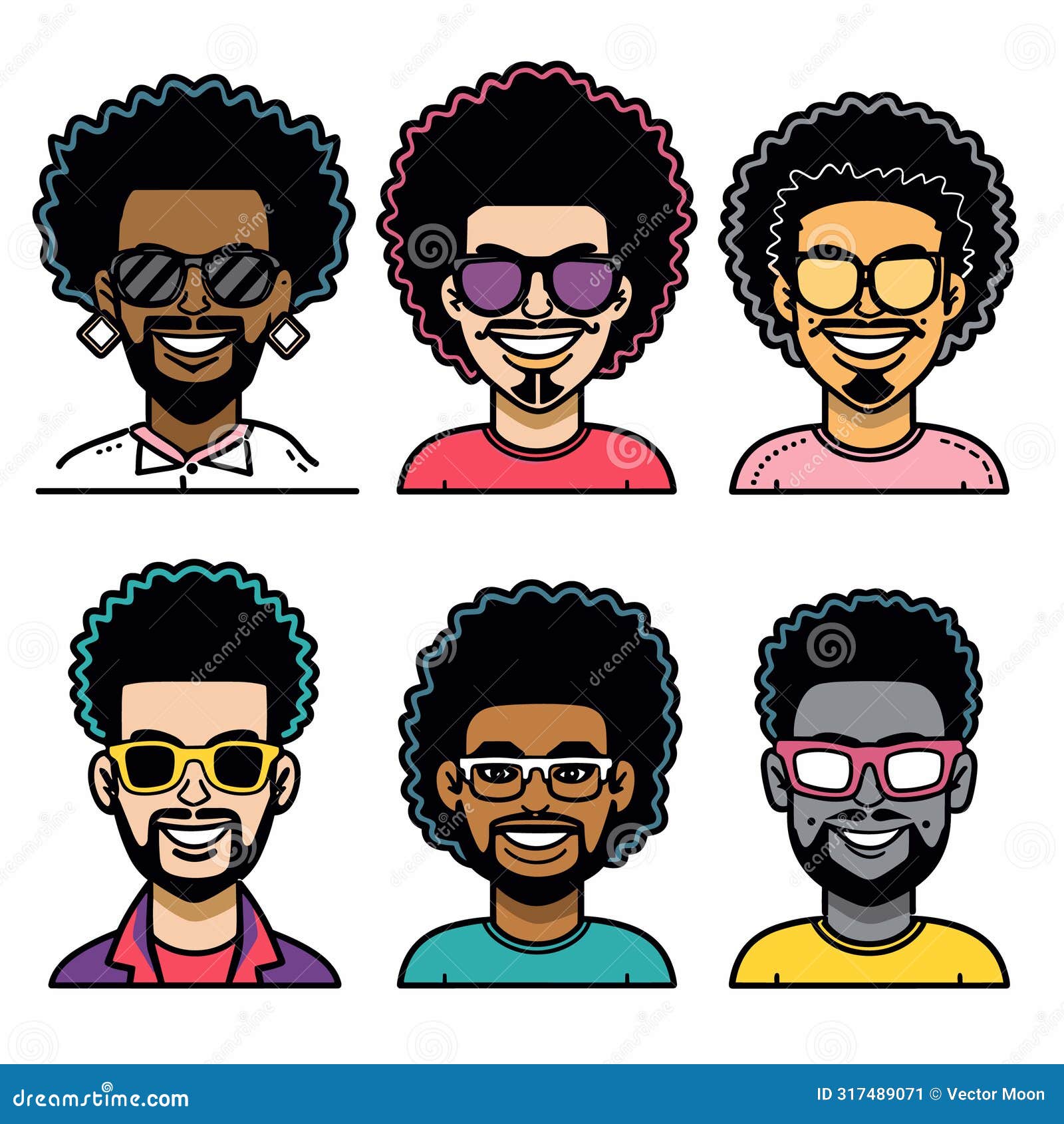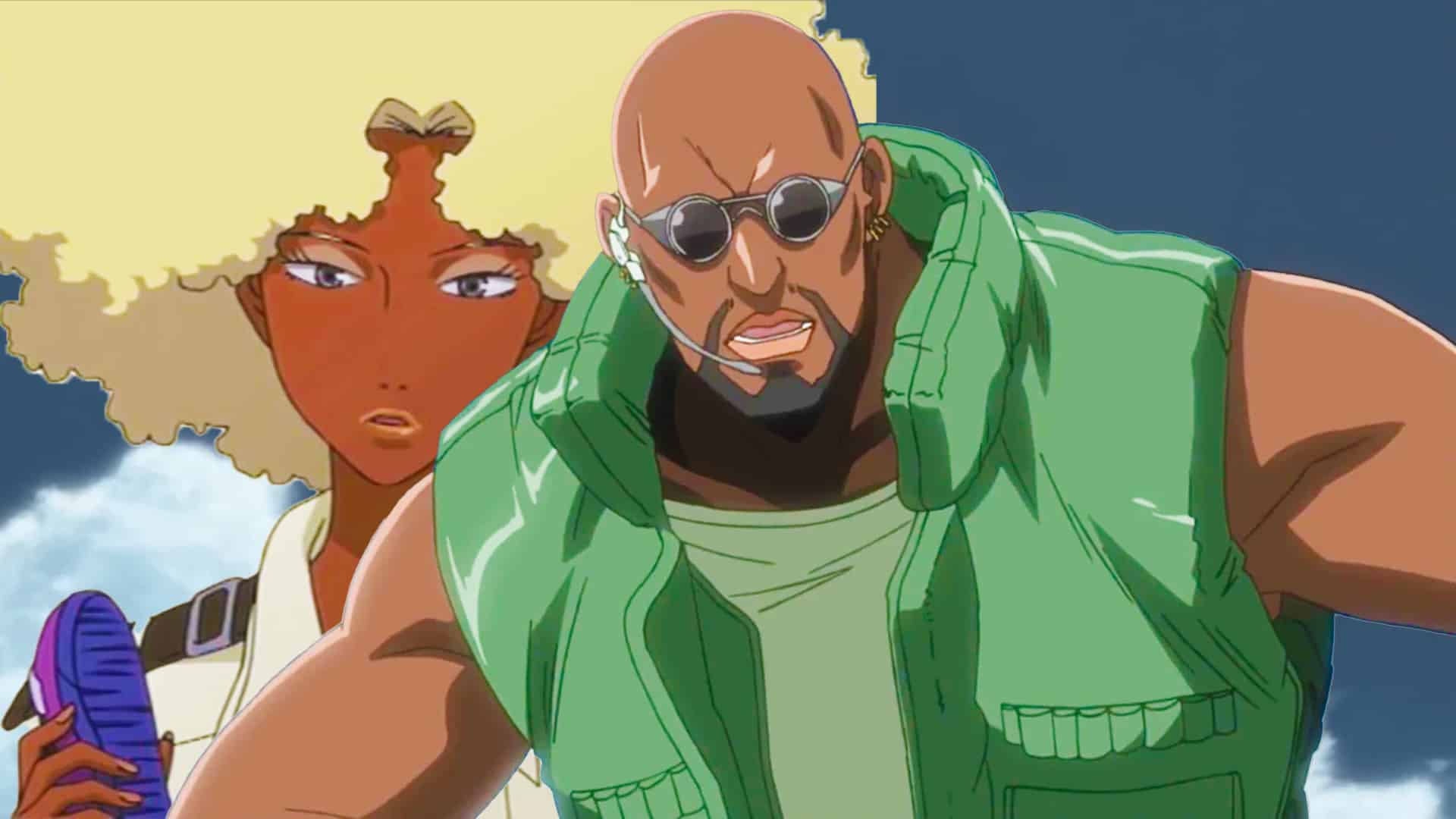Why Animated Characters With Afros Are Breaking Barriers In Pop Culture
Animated characters with afros have become a powerful symbol of representation and diversity in modern entertainment. From the big screen to your favorite streaming platform, these characters are redefining what it means to be inclusive in the world of animation. It's not just about hairstyles—it's about telling stories that resonate with audiences from all walks of life. So, buckle up because we're diving deep into why these characters matter more than ever before.
When you think about animation, you might picture classic Disney princesses or superheroes with chiseled jawlines. But lately, there's been a shift toward embracing diversity—and afros are leading the charge. These hairstyles aren't just cool; they carry cultural significance that speaks to identity, heritage, and empowerment. And let's be real, who doesn't love seeing themselves represented in media?
This isn't just a trend—it's a movement. As studios and creators become more conscious of representation, animated characters with afros are breaking down barriers and opening doors for underrepresented communities. In this article, we'll explore why these characters matter, how they're changing the game, and why you should care. Let's get started!
Table of Contents
- The History of Afro Representation in Animation
- Cultural Significance of Afros in Animation
- Meet the Popular Animated Characters with Afros
- Challenges in Creating Diverse Animated Characters
- The Impact of Afro Representation on Young Audiences
- Current Trends in the Animation Industry
- What the Future Holds for Diverse Animation
- Statistical Insights on Diversity in Animation
- Benefits of Inclusive Storytelling
- Final Thoughts: Why Representation Matters
The History of Afro Representation in Animation
Let's rewind for a sec and talk about how we got here. Back in the day, animation was pretty one-sided when it came to representation. Most characters looked like they stepped out of a European fairy tale or an American sitcom. But as society evolved, so did the stories we tell. Enter: animated characters with afros. These bad boys and gals didn't just pop up overnight—they're the result of decades of activism and advocacy for better representation in media.
One of the earliest examples is "The Jackson 5ive," a cartoon series from the '70s that featured—you guessed it—the Jackson 5. While the focus was on music, the show also highlighted afro-centric hairstyles and fashion. Fast forward to today, and you'll find a whole roster of characters rocking afros in shows like "The Proud Family," "Black Panther," and even Netflix's "Kipo and the Age of Wonderbeasts." It's been a journey, but we're finally seeing progress.
Key Milestones in Afro Representation
- 1971: "The Jackson 5ive" debuts on ABC
- 2000: "The Proud Family" premieres, featuring Penny Proud and her iconic afro
- 2018: "Black Panther" introduces Shuri, a genius scientist with a killer afro
Cultural Significance of Afros in Animation
Now, let's talk about why afros matter beyond just being cool hairstyles. For many Black people, afros are more than hair—they're a statement. They represent pride in one's heritage, resistance against societal norms, and a celebration of natural beauty. When animated characters sport afros, it sends a powerful message to viewers: "You belong here too." It's not just about aesthetics; it's about validation.
In a world where media has historically marginalized certain groups, seeing afros in animation is a step toward leveling the playing field. It shows kids (and adults) that their stories are worth telling, their voices are worth hearing, and their identities are worth celebrating. And hey, who doesn't love a good afro flex?
Meet the Popular Animated Characters with Afros
Alright, time to meet some of the stars of the afro game. These characters aren't just eye candy—they're breaking barriers and making history. Here's a quick rundown of some fan favorites:
Penny Proud
From "The Proud Family," Penny is a trailblazer in her own right. Her afro isn't just a hairstyle; it's a symbol of pride and individuality. She's smart, sassy, and unapologetically herself—a role model for young viewers everywhere.
Shuri
Marvel's resident tech genius, Shuri, rocks her afro with confidence and innovation. As the younger sister of T'Challa in "Black Panther," she's a force to be reckoned with. Her character combines brains, bravery, and style in ways that inspire fans worldwide.
Kipo
From Netflix's "Kipo and the Age of Wonderbeasts," Kipo is a post-apocalyptic hero with a heart of gold—and an afro to match. Her journey through a world overrun by mutant animals is both thrilling and relatable, reminding us all that we're capable of greatness no matter what challenges we face.
Challenges in Creating Diverse Animated Characters
Of course, creating diverse animated characters isn't without its hurdles. Studios often struggle with stereotypes, tokenism, and lack of representation behind the scenes. It's not enough to slap an afro on a character and call it a day; authenticity matters. That means hiring writers, animators, and designers from diverse backgrounds to ensure that characters feel genuine and respectful.
Another challenge is navigating cultural sensitivities. What works in one region might not resonate in another, so creators need to tread carefully while still staying true to their vision. It's a balancing act, but one that's worth the effort when done right.
Common Pitfalls to Avoid
- Tokenism: Including diverse characters just for the sake of appearances
- Stereotypes: Falling back on outdated or offensive tropes
- Lack of Depth: Creating characters with no real personality or purpose
The Impact of Afro Representation on Young Audiences
So, why does all this matter? Because representation shapes how kids see themselves and others. When young viewers see animated characters with afros, they start to believe that their stories matter too. It fosters a sense of belonging and encourages them to embrace their unique identities.
Studies have shown that diverse media exposure can reduce prejudice and promote empathy. By including characters with afros in animation, creators are helping to build a more inclusive and understanding world—one episode at a time.
Current Trends in the Animation Industry
Right now, the animation industry is leaning heavily into diversity and inclusion. More studios are investing in projects that feature underrepresented voices, and audiences are responding positively. Shows like "Central Park," "Amphibia," and "Tuca & Bertie" are proving that there's a huge demand for stories that reflect the real world.
Streaming platforms are also playing a big role in this shift. With services like Netflix, Hulu, and Disney+ offering global reach, creators have more opportunities than ever to showcase their work. And guess what? Audiences are loving it. Ratings are up, reviews are glowing, and the conversation around diversity in animation is louder than ever.
What the Future Holds for Diverse Animation
Looking ahead, the future of diverse animation looks bright. As technology advances and audiences become more discerning, we'll likely see even more innovative storytelling and groundbreaking characters. Imagine a world where every child can see themselves represented in their favorite shows. Sounds pretty awesome, right?
But it's not just about the characters—it's about the creators too. More studios are committing to hiring diverse talent behind the scenes, which will only enhance the authenticity of the stories being told. The sky's the limit, and we can't wait to see what comes next.
Statistical Insights on Diversity in Animation
Let's break it down with some numbers. According to a recent study by the Geena Davis Institute on Gender in Media, only 31% of speaking characters in family films are people of color. While that number is improving, there's still a long way to go. On the flip side, shows featuring diverse casts tend to perform better with audiences, with engagement rates up to 20% higher than their counterparts.
Another interesting stat: 76% of parents say they actively seek out media that promotes diversity for their kids. This shows that there's a clear demand for inclusive content, and studios are starting to take notice.
Benefits of Inclusive Storytelling
So, what do we gain from all this? Plenty. Inclusive storytelling benefits everyone involved—from creators to consumers. For starters, it opens up new markets and opportunities for studios. It also fosters creativity and innovation, as diverse perspectives bring fresh ideas to the table.
On a personal level, inclusive storytelling helps viewers develop empathy, understanding, and a broader worldview. It challenges stereotypes, breaks down barriers, and promotes unity. And let's not forget—it's just plain fun to watch. Who wouldn't want to see more characters with afros kicking butt and taking names?
Final Thoughts: Why Representation Matters
As we wrap up, let's circle back to why animated characters with afros matter. They're more than just hairstyles—they're symbols of progress, empowerment, and inclusion. By embracing diversity in animation, we're creating a world where everyone feels seen, heard, and valued.
So, what can you do? Share this article with your friends, family, and followers. Leave a comment below telling us your favorite animated character with an afro. And most importantly, keep supporting creators who prioritize representation and authenticity. Together, we can make the world of animation a little brighter—one afro at a time.

Six Diverse Cartoon Male Characters Afros, Showcased Shoulders Up

Black Cartoon Characters With Afros Printable Word Searches

Top 72+ anime characters with afros latest